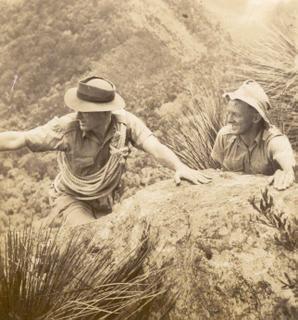
Changes...
Early in 2005, the strange hiss of an electric bolt drill echoed around the overhangs on Tibrogargan. I’d just finished
Prometheus II, an exposed climb below Cave Five with Greg Sheard, Jane White (pictured) and Cass Crane. I felt a great sadness, watching the trachyte powder drifting down as a couple of climbers forced their way up through the previously impossible overhangs. Just to their north was the classic
Trojan, climbed in 1966 by Les Wood and John Tillack. And a few metres to the south,
Overexposed, another special route climbed by Les Wood and Donn Groom the same year. No bolts were placed (or carried) on the first ascent of either climb. Perhaps it is symptomatic of the current era that the claim for the longest climb in the country is a route which uses almost 100 bolts—the difficult 568 metre
Lost Boys on the north face of Mt Warning by Tim Balla and Malcolm Matheson. A significant achievement according to the rules of today’s game—but even more difficult, perhaps unclimbable, without bolts. I wonder how far we can honestly say we’ve travelled when we consider this in light of the first tentative steps taken by the first European climbers in Australia, more than a century ago.
Picture: Jane White reaches easier ground after the delicate traverse on Prometheus II. Michael Meadows collection.






